| # | Name | Photos | Introduction |
|---|---|---|---|
| 1 | Jiazheng Pan |
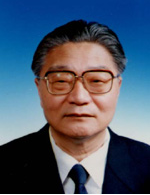
|
Jiazheng Pan, a celebrated expert in hydropower project, devoted himself to hydropower construction and scientific research in China. The hydropower projects he participated in is beyond count. He supervised the design of several medium and large-scale hydropower stations. Among the ones he helped design, include Huangtankou, Liuxihe River, Dongfang, Xinanjiang River, Wuxijiang River, Jinping, and Mofangou. The large-scale hydropower works he has directed include Longyangxia, Dongjiang, Ertan, Longtan, and the Three Gorges. He is known as "the first generation of hydropower experts of the PRC ","the chief designer of the Three Gorges" and so on. |
| 2 | Caixin Sun |

|
Caixin Sun(1944.12.13-2011.11.25)is a Professor , Doctorate Advisor, and an expert in High-Voltage Engineering (insulation fault diagnosis for high-voltage apparatus). Born in Dianjiang County, Chongqing, China, He graduated from Chongqing University in 1969, and went to Leningrad Polytechnic University in former Soviet Union as a visiting scholar. He used to be the director of the Department of electrical engineering of Chongqing University, vice president of Chongqing University, and the director of High Voltage and New Electrical Technology of Key Laboratories of the Ministry of Education. He specializes in high voltage and insulation technology, especially in the field of high voltage insulation and failure diagnosis. He has made a long-term and arduous test and theoretical research on the EHV/UHV external insulation characteristics against high altitude, pollution, icing (snow), acid rain (fog) and other complex conditions, discharge mechanism, insulation coordination principle and technical measures to prevent accidents. He has made systematic achievements and promoted the development of the theory of external insulation discharge. He has been cited by the experts of the international power grid conference as the technical support for formulating standards and domestic standards, as well as be used in the design and operation of many key projects, such as west-to-east power transmission project, with remarkable benefits. He presided over the systematic research on online monitoring and fault diagnosis technology of large electrical equipment, solved the key technologies of online monitoring such as multiple feature extraction, fault classification and pattern recognition, developed a practical multi-function system capable of on-line monitoring and fault diagnosis, monitoring multi insulation parameters of electrical equipment in transforming station, realizing the industrialization of achievements with remarkable benefits. He proposed and carried out the research on the mechanism and method of irreversible electrical breakdown of tumor with energy controllable steep pulse, and achieved preliminary results. He has won the second prize of the National Science and Technology Progress Award and the first prize of the National Teaching Achievement Award, authorized 3 invention patents, published 4 monographs and more than 260 papers. He was elected as an academician of the Chinese Academy of Engineering in 2003. |
| 3 | Guorong Shen |
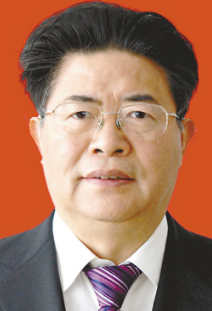
|
Shen Guorong, born in Wujin, Jiangsu Province on July 17, 1949, male, Han nationality, expert in power system automation, member of the Communist Party of China. In 1978, he graduated from North China Electric Power University, and in 1982, he graduated from the Electric Power Science Research Institute of the Ministry of electric power industry, and obtained the master's degree of Engineering in electric power system and automation. He is currently the chairman of Nanjing NR Electric (NR), honorary president of State Grid Electric Power Research Institute, professor level senior engineer, chairman of Technical Committee of relay protection standardization in power industry, chairman of sub Technical Committee of static relay protection device of National Technical Committee of measurement relay and protection equipment standardization. He has been engaged in the research of power system automation for a long time, and has made outstanding achievements in many fields such as power system relay protection, Large-Scale Power Grid Security and Stability Control, ultra-high voltage AC / DC transmission and flexible AC / DC transmission. Since the 1980s, he has creatively put forward "the principle of power frequency variation relay protection", "the principle of oscillation blocking and opening" and "the principle of sequential impedance discrimination", solving the difficulty of taking into account of relay protection reliability and fast action, as well as the difficulty in distinction between grid synchronization and system oscillation; He proposed and organized the construction of the power grid security and stability framework based on "three defenses", which plays a key role in ensuring the power grid transient stability and preventing large-scale power grid collapse; He led the team to develop a series of power control protection, as well as high-end intelligent power equipment such as flexible DC transmission and unified power flow control system (UPFC), which have been widely used, and have made active contributions to promoting the progress of China's power technology and the localization of major power equipment. In 1988, he won the first China Youth Science and Technology Award (named) national level young and middle-aged experts with outstanding contributions; in 1990 and 1992, he won two "second prize of National Invention"; in 1999, he won one "first prize of National Science and Technology Progress"; in 2007, he won one “second prize of National Science and Technology Progress ". He was elected academician of Chinese Academy of Engineering in 1999. |
| 4 | Liwu Li |

|
Li Liyu (1941.7.8-) Power grid engineering expert, DC transmission expert. Born in Yancheng, Jiangsu Province, he graduated from the Department of Electrical Engineering of Tsinghua University in 1967. He is currently the chairman of the expert committee of China Southern Power Grid Corporation. He has been engaged in power grid construction, and has made achievements and contributions in the fields of power grid engineering, DC transmission and AC-DC parallel grid operation technology. He participated in and organized the construction of the first 330 kV AC transmission project, the first 500 kV AC transmission project and the first ± 500 kV DC transmission project in China; He participated in and supervised the technical research, key project tackling and project construction of the first ± 800kV DC transmission project in China and the world. As the technical director and project director in charge of multiple EHV AC and DC transmission projects, he presided over key technology research and organized engineering construction. He has compiled more than 10 major engineering and technical reports, published more than 40 academic papers, and co-published one monograph. He has won 1 first prize of National Science and Technology Progress, 1 second prize, 7 ministerial science and technology progress awards and 8 authorized patents. He has contributed to promoting the development of China's power grid technology, especially to the DC transmission technology and AC-DC parallel grid operation technology to reach the international advanced level. He was elected as a member of the Chinese Academy of Engineering in 2007. |
| # | Time | Title | Contents |
|---|---|---|---|
| 1 | 2000-11 | The first of west-to-east power transmission projects commenced | The first of west-to-east power transmission projects: capacity expansion project of Hongjiadu, Yinzidu and Wujiangdu Hydropower Station |
| 2 | During the 10th Five-Year Plan | Power supply and transmission line construction of South line of the west-to-east power transmission project | the state emphasizes speeding up the implementation of the power supply and transmission line construction of South line of the west-to-east power transmission project |
| 3 | By the end of 2005 | basically meet the electricity demand of Guangdong during the 10th Five-Year Plan | Besides 3 million kilowatts from the Three Gorges, the transmission capability from Yunnan and Guizhou provinces will increase to 7 million kilowatts, which basically meets the electricity demand of Guangdong during the 10th Five-Year Plan. |
| 4 | During the 11st Five-Year Plan | 4 million kilowatts | Increase the transmission capability to Guangdong by 4 million kilowatts |
| 5 | During the 12nd Five-Year Plan | The world's most magnificent AC-DC hybrid power grid | During the 12nd Five-Year Plan, China Southern Power Grid constructed altogether 16 west-east power electricity transmission lines (8 AC lines and 8 DC lines) of 500kV and above, with a maximum transmission capacity of 35 million kilowatts, and a cumulative power supply of 714 billion kilowatt hours, making it the most magnificent AC-DC hybrid power grid in the world. |
| # | Contents | Photos |
|---|---|---|
| 1 | Before the implementation of west-to-east power transmission project, there is only one transmission line from Tianshengqiao to Guangdong which is still under construction. To complete the task of sending 10 million kilowatts to Guangdong, the construction of the power transmission project was a highlight and involved cross-provincial coordination. Tianshengqiao-Guangzhou ± 500 kV DC power transmission project The project from Guizhou Tianshengqiao converter station to Guangdong Converter Station in Guangzhou has a total length of 960 kilometers and a transmission capacity of 1.8 million kilowatts. The project under construction should be put into operation at the end of 2000, and bipolar mode production at the end of 2001. The capacity of power transmission to Guangdong has leaped from the original 1.2 million kilowatts to 3 million kilowatts. Tianshengqiao-Guangzhou's third 500kV AC power transmission and transformation project The project starts from Tianshengqiao converter station in Guizhou Province in the West and ends at Maoming substation in Guangdong Province in the East, constructing New Guangxi Baise switch station and Nanning transforming station, expansion of Tianshengqiao converter station, Yulin transforming station in Guangxi and Maoming transforming station in Guangdong Province. The total length of the transmission line is 797 km with a transformation capacity of 1.5 million KVA. The project was completed and put into operation in June 2002. As a result, a new pattern of “three DC lines and one AC line” has been formed. The transmission capability has increased from 3 million kilowatts to more than 3.7 million kilowatts. (3) Guizhou -Guangdong 500kV AC double circuit power transmission and transformation project The project starts from Qingyan substation in Guizhou Province in the West and ends at Luodong substation in Guangdong Province in the East, constructing Hechi and Hezhou transforming station in Guangxi, expansion of Liuzhou transforming station in Guangxi and Luodong transforming station in Guangdong. The total length of the transmission line is 1800 km with a transformation capacity of 1.5 million KVA. The project was completed and put into operation at the end of June 2003, increasing the transmission capacity to Guangdong by 1.5 million kilowatts. Meanwhile, Guangxi Pingguo and Hechi Thyristor Controlled Series Compensator (TCSC) projects have been completed and put into operation, increasing the transmission capacity by 500000 kilowatts. The total transmission capability of the west-to-east power transmission project has exceeded 5 million kilowatts. Three Gorges—Guangdong ± 500kV DC power transmission project(invested and constructed by State Grid Corporation of China). The project starts from Jiangling converter station in Jingzhou, Hubei Province, and ends at echeng converter station in Huizhou, Guangdong Province. The total length of the transmission line is 962 km with a transformation capacity of 3 million KVA. The project was put into operation in January 2004 in unipolar mode, and in June 2004 in bipolar mode, increasing the transmission capacity to Guangdong by 3 million kilowatts. (5) Guizhou-Guangdong ± 500kV DC power transmission project The project starts from Anshun convertor station in Guizhou Province and ends at Zhaoqing convertor station in Guangdong Province. The total length of the transmission line is 882 km with a transformation capacity of 3 million KVA. The project is planned to be put into operation in January 2004 in unipolar mode, and in June 2004 in bipolar mode, increasing the transmission capacity to Guangdong by 3 million kilowatts. The project is planned to be put into operation in June 2005 and actually in September 2004 in bipolar mode, and will increase the transmission capacity to Guangdong by 3 million kilowatts. |
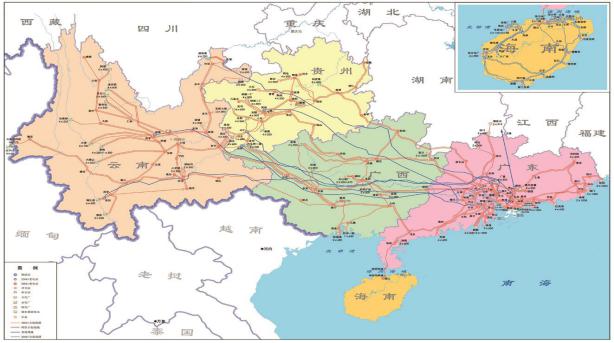
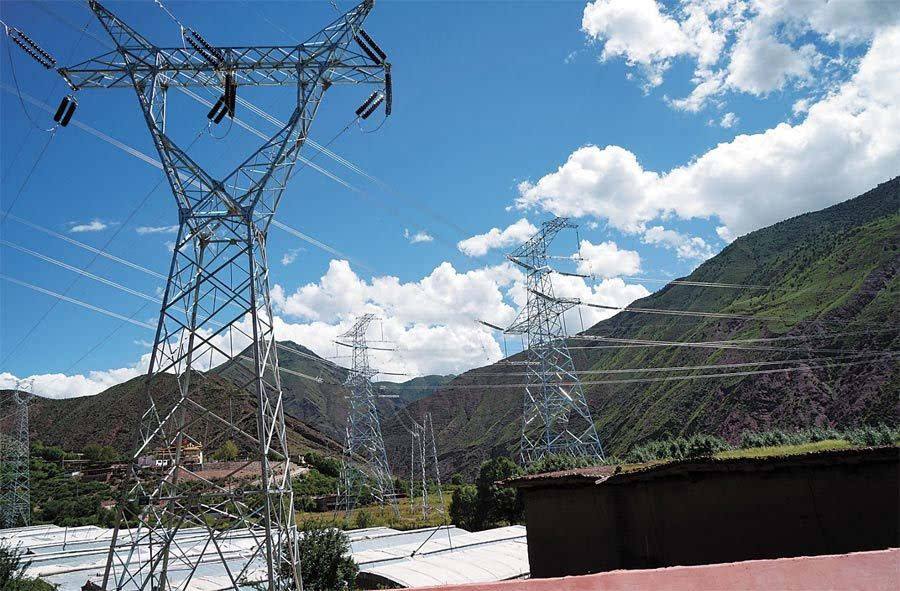
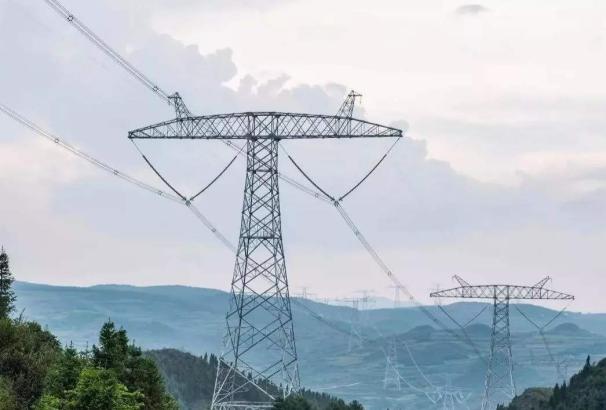

| # | Contents | Photos |
|---|---|---|
| 1 | China's major ultra-high voltage transmission line in smooth operation | http://www.xinhuanet.com/english/2017-06/24/c_136391176.htm |
| 2 | Power transmission from China’s west to east | https://journal.probeinternational.org/2006/05/10/power-transmission-chinas-west-east/ |
| 3 | 【Super project of PRC】west-to-east power transmission project | http://china.cnr.cn/yaowen/20190807/t20190807_524721449.shtml |
[1] 洪秀萍, 吕帅, 梁汉东. 贵州省“西电东送”存在的问题及对策%Existing Problems and Countermeasures to "Transmission of Power in West to East" of Guizhou[J]. 煤炭技术, 2015, 034(010):307-309.
[2] Ping H X , Shuai L , Dong L H . Existing Problems and Countermeasures to "Transmission of Power in West to East" of Guizhou[J]. Coal Technology
[3] Da-Bing C . More Contribution to Fulfil Strategy of Western Region Great Exploitation and Transmission of Power in West to East[J]. hydroelectric energy, 2001.
[4] Huang Y , Xu Z . Study on the pure DC transmission scheme for China's future power transmission from the West to the East[C].IEEE Power Engineering Society General Meeting. IEEE, 2004.
[5] Hu F , He G . Energy-saving and emission reduction benefit analysis on west-to-east transmission project of China Southern Power Grid[J]. automation of electric power systems, 2014.
[6] 李翔, 肖鸣, 李阳坡,等. Analysis of AC Section Power Fluctuation in West-to-East Electricity Transmission Project and Related Suggestion%西电东送交流断面功率波动空间的分析及建议[J]. 南方电网技术, 2011, 005(002):12-16.